Parkside PHKS 66 User Manual
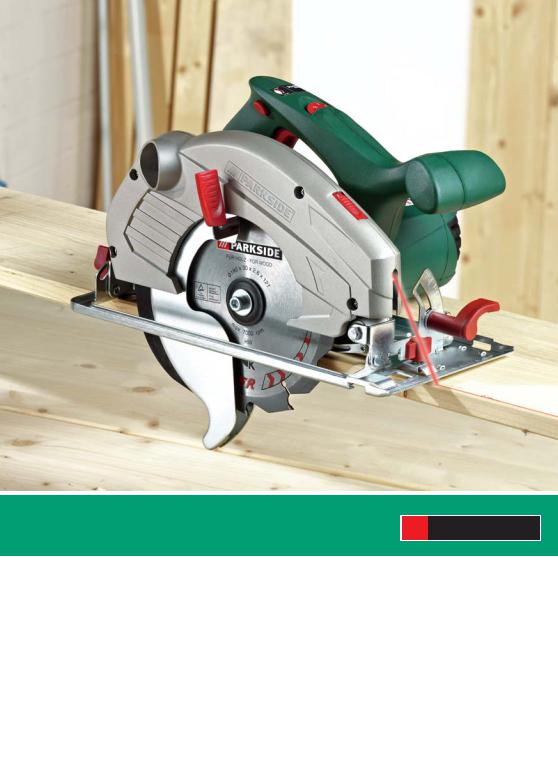
PHKS 66
CIRCULAR SAW |
KÄSIPYÖRÖSAHA |
Operation and Safety Notes |
Käyttöja turvaohjeet |
Translation of original operation manual |
Alkuperäisen käyttöohjeen käännös |
HANDCIRKELSÅG |
HÅNDRUNDSAV |
Bruksanvisning och säkerhetsanvisningar |
Brugsog sikkerhedsanvisninger |
Översättning av bruksanvisning i original |
Oversættelse af den originale driftsvejledning |
HANDKREISSÄGE |
|
Bedienungsund Sicherheitshinweise |
|
Originalbetriebsanleitung |
|
|
|
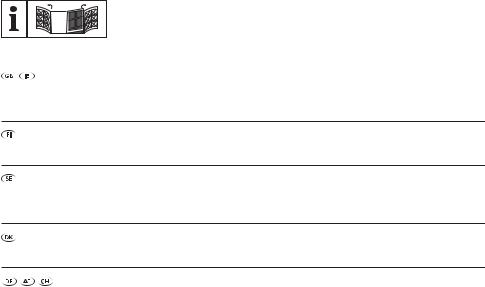
Before reading, unfold both pages containing illustrations and familiarise yourself with all functions of the device.
Käännä ennen lukemista molemmat kuvalliset sivut esiin ja tutustu seuraavaksi laitteen kaikkiin toimintoihin.
Vik ut båda bildsidorna och ha den till hands när du läser igenom anvisningarna och gör dig bekant med apparatens / maskinens funktioner.
Før du læser, vend begge sidene med billeder frem og bliv bekendt med alle apparatets funktioner.
Klappen Sie vor dem Lesen die beiden Seiten mit den Abbildungen aus und machen Sie sich anschließend mit allen Funktionen des Gerätes vertraut.
GB / IE |
Operation and Safety Notes |
Page |
5 |
FI |
Käyttöja turvaohjeet |
Sivu |
17 |
SE |
Bruksanvisning och säkerhetsanvisningar |
Sidan |
29 |
DK |
Brugsog sikkerhedsanvisninger |
Side |
41 |
DE / AT / CH |
Bedienungsund Sicherheitshinweise |
Seite |
53 |

1 2
3

 4 10
4 10 
|
|
|
|
|
|
5 |
|
9 |
|
|
|
|
|
||
|
|
|
|
||||
|
|
|
|
|
|
|
|
|
|
|
|
|
|
|
|
8
7
6
1 11
18
17
|
|
|
|
|
|
|
|
|
|
|
|
|
|
|
|
|
|
12 |
|
|
|
|
|
|
|
|
|
|
|
|
|
|
|
|
|
|
|
||
9 |
|
|
|
|
|
|
|
|
|
|
|
|
|
|
|
|
|
|
|
|
|
|
|
|
|
|
|
|
|
|
|
|
|
|
|
|
12a |
||
7a |
|
|
|
|
|
|
|
|
|
|
|
|
|
|
|
|
|
||
|
|
|
|
|
|
|
|
|
|
|
|
|
|
12b |
|||||
|
|
|
|
|
|
|
|
|
|
|
|
||||||||
7 |
|
|
|
|
|
|
|
|
|
|
|
|
|
|
|
|
|
||
|
|
|
|
|
|
|
|
|
|
|
|
|
|
|
|
|
|
|
|
|
|
|
|
|
|
|
|
|
|
|
|
|
|
|
|
|
|
|
|
|
|
|
|
|
|
|
|
|
|
|
|
|
|
|
|
|
|
9 |
|
|
|
|
|
|
|
|
|
|
|
|
|
|
|
|
|
|
|
|
|
|
|
|
|
|
|
|
|
|
|
|
|
|
|
|
|
|
|
13 |
|
16 |
|
|
|
|
|
|
|
|
|
|
|
|
|
|
|
|
|
|
|
|
|
|
|
|
|
|
|
|
|
|
|
|
|
|
|
|
|
|
|
|
|
|
|
|
|
|
|
|
|
|
|
|
|
|
|
|
|
|
|
|
|
|
|
|
|
|
|
|
|
|
|
|
|
|
|
|
|
14 |
|
|
|
|
|
|
|
|
|
|
|
|
|
|
|
|
|
|
|
||
15
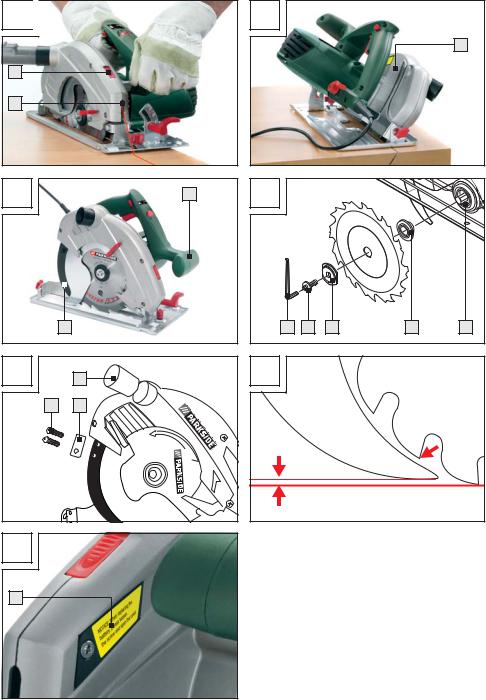
A 

11
12
C |
20 |
|
|
16 |
E |
18 |
26 |
25 |
G |
|
10 |
|
B |
19 |
D |
|
|
|
|
6 |
24 |
23 |
22 |
21 |
F |
|
|
|
|
max. 5 mm |
max. 5 mm |
|

Table of contents
Introduction |
|
|
Proper use...................................................................................................................... |
Page |
6 |
Features and equipment ............................................................................................... |
Page |
6 |
Included items ............................................................................................................... |
Page |
7 |
Technical information .................................................................................................... |
Page |
7 |
General safety advice for electrical power tools |
|
|
1. Workplace safety ..................................................................................................... |
Page |
7 |
2. Electrical safety ......................................................................................................... |
Page |
8 |
3. Personal safety.......................................................................................................... |
Page |
8 |
4. Careful handling and use of electrical power tools................................................ |
Page |
9 |
Safety advice relating specifically to this device......................................................... |
Page |
9 |
Preparing for use |
|
|
Switching on and o ..................................................................................................... |
Page 12 |
|
Setting the cutting angle ............................................................................................... |
Page 13 |
|
Setting the cutting depth ............................................................................................... |
Page 13 |
|
Setting the guide fence ................................................................................................. |
Page 13 |
|
Switching the laser on and o ...................................................................................... |
Page 13 |
|
Working with the circular saw...................................................................................... |
Page 13 |
|
Setting the speed........................................................................................................... |
Page 13 |
|
Connecting the vacuum sawdust extraction device .................................................... |
Page 14 |
|
Changing a saw blade................................................................................................. |
Page 14 |
|
Installing and setting the riving knife............................................................................ |
Page |
14 |
Tips and tricks................................................................................................................ |
Page 14 |
|
Maintenance and cleaning........................................................................ |
Page 15 |
|
Service ......................................................................................................................... |
Page 15 |
|
Warranty................................................................................................................... |
Page 15 |
|
Disposal...................................................................................................................... |
Page 15 |
|
Declaration of Conformity / Manufacturer ................................... |
Page 16 |
|
GB/IE 5
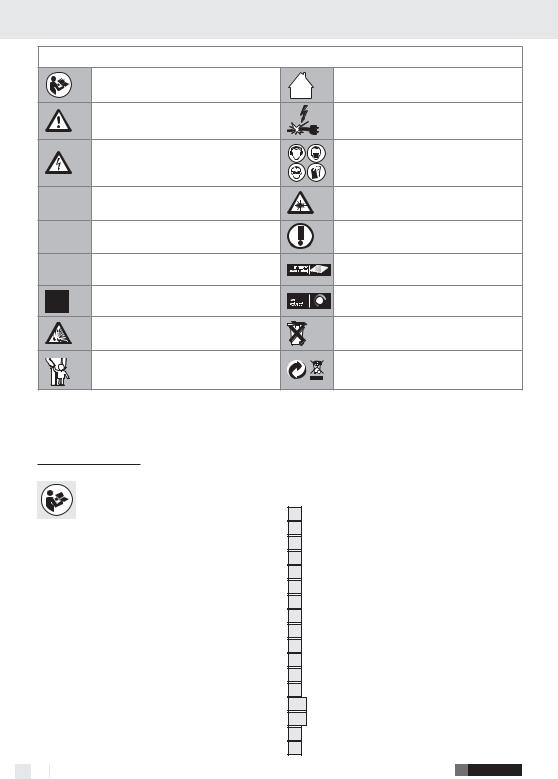
Introduction
The following pictograms are used in these operating instructions / on the device:
|
Read instruction manual! |
For indoor use only! |
|
|
Observe caution and safety notes! |
Risk of loss of life by electric shock from |
|
|
damaged mains lead or mains plug! |
||
|
|
||
|
Caution – electric shock! |
Wear hearing protection, dust |
|
|
protection mask, protective glasses |
||
|
Danger to life! |
||
|
and protective gloves. |
||
|
|
||
V~ |
Volt (AC) |
Caution, laser! Do not expose yourself |
|
to laser radiation. |
|||
|
|||
n0 |
Design no-load speed |
Proper procedure and handling. |
|
|
|||
W |
Watts (E ective power) |
Automatic power delivery system |
|
|
Safety class II |
Electronic soft start |
|
|
Risk of explosion! |
Do not dispose of rechargeable batteries |
|
|
with your household refuse! |
||
|
|
||
|
Keep children away from |
Dispose packaging and appliance in |
|
|
electrical power tools! |
an environmentally-friendly way! |
Circular saw PHKS 66
Introduction
Please make sure you familiarise yourself fully with the way the device works
before you use it for the first time and that you understand how to handle electrical power tools correctly. To help you do this please read the accompanying operating instructions. Keep these instructions in a safe place. If you pass the device on to anyone else, please ensure that you also pass on all the documentation.
Proper use
For sawing longitudinal, cross and mitre cuts in firmly supported solid wood, plywood, plastic and lightweight construction materials. Please note that the blade pre-installed in the saw as supplied is intended for use with wood only. Any other use or modification to the device shall be considered as
improper use and could give rise to considerable dangers.
Not suitable for commercial use.
Features and equipment
1 Rotation speed setting wheel
2 Safety lock-out
3 ON / OFF switch
4Spindle lock
5 Cutting depth setting clamp
6Allen key
7Automatic blade guard
7a Release lever for the automatic blade guard
8Base plate
9 Cutting angle setting clamp
10Battery compartment cover
11Laser ON / OFF switch
12Laser
12a Laser outlet aperture
12b Cutting angle scale
13Wing screw for guide fence
14Guide fence slot
6GB/IE
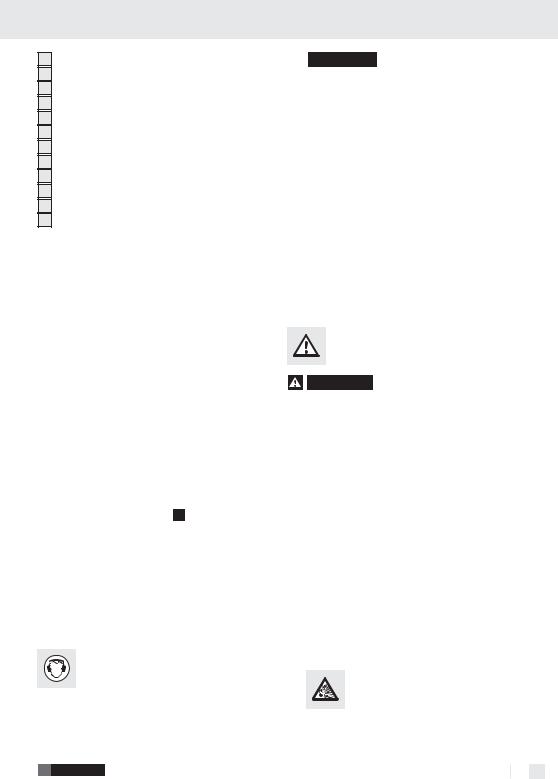
Introduction / General safety advice for electrical power tools
15Guide fence
16Riving knife
17Sawdust removal connector
18Adapter for vacuum sawdust removal
19Cutting depth scale
20Auxiliary handle
21Drive spindle
22Mounting flange
23Clamping flange
24Clamping screw with plain washer
25Riving knife mounting
26Mounting screws
Included items
1Circular saw
1Guide fence
1Adapter for vacuum sawdust removal
1Allen key
1Operating instructions
Technical information
Rated power: |
1300 W |
Rated voltage: |
230 V ~, 50 Hz |
No-load rotational speed: n0 2200 – 5200 min-1 |
|
Saw blade: |
190 x 30 x 1.8 |
|
(2.6 mm tooth thickness) |
Cutting depth: |
66 mm |
Protection class: |
II / |
Noise and vibration data:
Measured values for noise are determined in accordance with EN 60745. The A-weighted noise level of the electrical power tool are typically:
Sound pressure level: |
96 dB(A) |
Sound power level: |
110 dB(A) |
Uncertainty K: |
3 dB |
Wear ear protection!
Evaluated acceleration, typical:
Hand / arm vibration ah = 3,447 m / s2 Uncertainty K = 1,5 m / s2
 WARNING! The vibration level given in these instructions has been measured in accordance with a standardised measurement procedure specified in EN 60745 and can be used to compare devices.
WARNING! The vibration level given in these instructions has been measured in accordance with a standardised measurement procedure specified in EN 60745 and can be used to compare devices.
Di erent uses of the device give rise to di erent vibration levels and in many cases they may exceed the values given in these instructions. It is easy to underestimate the vibration load if the electrical power tool is used regularly in particular circumstances.
Note: If you wish to make an accurate assessment of the vibration loads experienced during a particular period of working, you should also take into account the intervening periods of time when the device is switched o or is running but is not actually in use. This can result in a much lower vibration load over the whole of the period of working.
General safety advice for electrical power tools
WARNING! Read all the safety advice
and instructions! Failure to observe the safety advice and instructions may result in electric shock, fire and / or serious injury.
KEEP ALL THE SAFETY ADVICE AND INSTRUCTIONS IN A SAFE PLACE FOR FUTURE REFERENCE! THE TERM “ELECTRICAL TOOL” USED IN THE SAFETY ADVICE REFERS TO ELECTRICAL TOOLS POWERED BY MAINS ELECTRICITY (BY MEANS OF A MAINS LEAD) AND ELECTRICAL TOOLS POWERED BY RECHARGEABLE BATTERIES (WITHOUT A MAINS LEAD).
1. Workplace safety
a)Keep your working area clean and well lit. Untidy or poorly lit working areas can lead to accidents.
b)Do not work with the device in potentially explosive envi-
ronments in which there are inflammable liquids, gases or dusts.
Electrical power tools create sparks, which can ignite dusts or fumes.
GB/IE 7
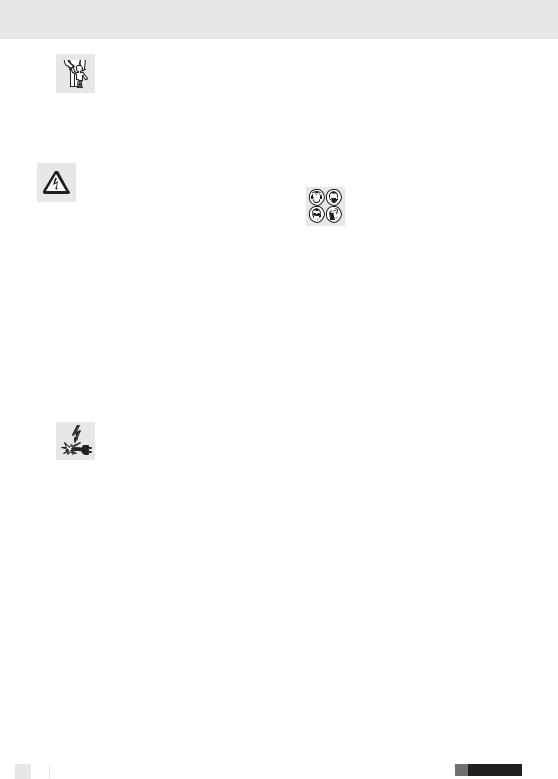
General safety advice for electrical power tools
c)Keep children and other people
away while you are operating the electrical tool. Distractions
can cause you to lose control of the device.
2. Electrical safety
To avoid danger to
life from electric shock:
a)The mains plug on the device must match the mains socket. The plug must not be modified in any way. Do not use an adapter plug with devices fitted with a protective earth. Unmodified plugs and matching sockets reduce the risk of electric shock.
b)Avoid touching earthed surfaces such as pipes, radiators, ovens and refrigerators with any part of your body.
There is an increased risk of electric shock if your body is earthed.
c)Keep the device away from rain or moisture. Water entering an electrical device increases the risk of electric shock.
d)Do not use the mains lead for any purpose for which it was
 not intended, e.g. to carry the device, to hang up the device or to pull the mains plug out of the mains socket. Keep the mains lead away from heat, oil, sharp edges or moving parts of the device. Damaged or tangled mains leads increase the risk of electric shock.
not intended, e.g. to carry the device, to hang up the device or to pull the mains plug out of the mains socket. Keep the mains lead away from heat, oil, sharp edges or moving parts of the device. Damaged or tangled mains leads increase the risk of electric shock.
e)When working outdoors with an electrical power tool always use extension cables that are also approved for use outdoors. The use of an extension cable suitable for outdoor use reduces the risk of electric shock.
f)Use a residual current device (RCD) for protection if operating the electrical power tool in a moist environment is unavoidable. The use of an RCD reduces the risk of electric shock.
3. Personal safety
a)Remain alert at all times, watch what you are doing and always proceed with caution. Do not use the device if you are tired or under the influence of drugs, alcohol or medication. One moment of carelessness when using the device can lead to serious injury.
b)Wear personal protective equipment and always wear safety glasses. The wearing of
personal protective equipment such as dust masks, non-slip safety shoes, safety helmets or ear protectors, appropriate to the type of electrical power tool used and work undertaken, reduces the risk of injury.
c)Avoid unintentional operation of the device. Check that the electrical power tool is switched off before you connect it to the mains, pick it up or carry it.
Accidents can happen if you carry the device with your finger on the ON / OFF switch or with the device switched on.
d)Remove any setting tools or spanners before you switch the device on. A tool or spanner left attached to a rotating part of a device can lead to injury.
e)Avoid placing your body in an unnatural position. Keep proper footing and balance at all times. By doing this you will be in a better position to control the device in unforeseen circumstances.
f)Wear suitable clothing. Do not wear loose clothing or jewellery. Keep your hair, clothing and gloves clear of moving parts. Loose clothing, jewellery or long hair can become trapped in moving parts.
g)If vacuum dust extraction and collection devices are fitted do not forget to check that they are properly connected and correctly used. The use of these devices reduces the hazard presented by dust.
8GB/IE
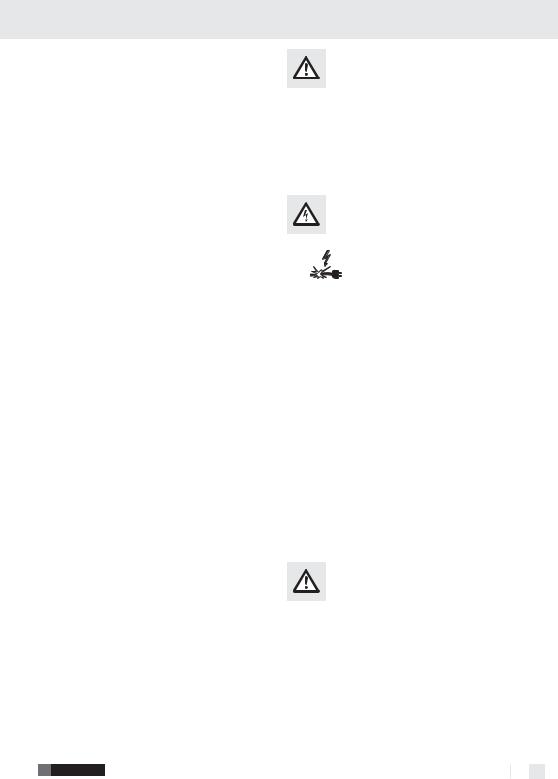
General safety advice for electrical power tools
4.Careful handling and use of electrical power tools
a)Do not overload the device. Always use an electrical power tool that is intended for the task you are undertaking. By using the right electrical power tool for the job you will work more safely and achieve a better result.
b)Do not use an electrical power tool if its switch is defective. An electrical power tool that can no longer be switched on and o is dangerous and must be repaired.
c)Pull the mains plug from the socket before you make any adjustments to the device, change accessories or when the device is put away. This precaution is intended to prevent you from unintentionally starting the device.
d)When not in use always ensure that electrical power tools are kept out of reach of children. Do not let anyone use the device if he or she is not familiar with it or has not read the instructions and advice. Electrical power tools are dangerous when they are used by inexperienced people.
e)Look after the device carefully. Check that moving parts are working properly and move freely. Check for any parts that are broken or damaged enough to detrimentally affect the functioning of the device. Have damaged parts repaired before you use the device. Many accidents have their origins in poorly maintained electrical power tools.
f)Keep cutting tools clean and sharp.
Carefully maintained cutting tools with sharp cutting edges are less likely to jam and are easier to control.
g)Use the electrical power tool, accessories, inserted tools etc. in accordance with these instructions and advice, and the stipulations drawn up for this particular type of device. In doing this, take into account the working conditions and the task in hand. The use of electrical power tools for purposes other than those intended can lead to dangerous situations.
Safety advice relating specifically to this device
Ensure that the device is always used in accordance with the advice in these operating instructions and only by persons over 16 years of age.
Note: Do not use grinding discs. Failure to observe this advice may result in injury or damage.
To avoid danger to life from electric shock:
|
|
|
Frequently check the condition of the |
|
|
||
|
|
|
device, mains lead and plug. Do not |
|
|
|
use the device if these kinds of parts |
|
are damaged. Never open up the device. A dam- |
||
|
aged device, mains lead or plug presents a se- |
||
|
rious danger to life from electric shock. Always |
||
|
have any repairs carried out or replacement parts |
||
|
fitted at the service centre or by an electrical |
||
|
equipment repair specialist. |
||
Do not operate the device if it is damp and do not use it in a damp environment.
If you use the device outdoors, always connect it through a residual current device (RCD) with a maximum trip current of 30 mA. If using an extension lead, always use one that is approved for outdoor use.
Note: Always keep the mains lead away from the working area of the machine and lead away the mains lead from the rear.
CAUTION! To avoid the risk of injury:
a)Keep your hands away from the area around the saw and clear of the saw blade. Hold the auxiliary handle or the motor housing with your free hand. If you have both hands on the saw they cannot be injured by the saw blade.
b)Do not grip the underside of the workpiece. The blade guard cannot protect you from the saw blade under the workpiece.
GB/IE 9

General safety advice for electrical power tools
c)Set the cutting depth to match the thickness of the workpiece. Less than a full tooth height should be visible below the workpiece.
d)Never hold the workpiece in your hand or steady it with your leg whilst sawing. Keep the workpiece steady on a stable supporting surface. It is important to see that the workpiece is firmly held in place to minimise any danger of it making contact with your body, jamming of the saw blade or loss of control.
e)Hold the device by the insulated handle surfaces when you are undertaking work where there is the danger of the cutting tool striking hidden electricity cables or the device‘s mains lead. Contact with a live wire means that the metal parts of the device may also become live and this can result in an electric shock.
f)When cutting longitudinally always use a guide fence or a straight edge guide.
This will improve the accuracy of your cut and reduce the risk of the blade jamming.
g)Always use a saw blade of the correct size and with the appropriate central fixing hole bore. Saw blades that do not correspond with the attachment components on the saw will not run true and could lead to loss of control.
h)Never use a damaged or incorrect saw blade washer or screw. The saw blade washer and screw have been specially designed to give your saw optimum performance and safety in use.
To avoid the device kicking back:
Kickback occurs as a result of incorrect use or misuse of the saw. It can be prevented by taking the appropriate precautions as described below.
a)Hold the saw with both hands and bring your arms into a position in which you will be able to withstand any kickback forces. Always stand to the side of the saw blade and never bring your body in line with the saw blade. When kickback occurs, the circular saw may jump backwards but the operator can control the kickback forces by adopting suitable precautions.
10 GB/IE
b)If the saw blade jams or sawing stops for another reason, release the ON / OFF switch and hold the saw in the workpiece without moving it until the saw blade comes to a complete stand still. Never try to remove the saw from the tool or to pull it backwards as long as the saw blade is still moving otherwise this could cause a recoil action.
Find the reason for the saw blade jamming and take the appropriate action to rectify it.
c)If you wish to restart a saw that has been inserted into the workpiece, centre the saw blade in the saw gap and check that the saw teeth do not catch on the workpiece. If the saw blade jams, it may move itself out of the workpiece or cause a kickback when the saw is restarted.
d)Support boards whilst cutting to reduce the risk of kickback caused by a jammed saw blade. Large boards may bend under their own weight. Boards must be supported on both sides as well as near the saw gap and at the edges.
e)Do not use blunt or damaged saw blades. Saw blades with blunt or misaligned teeth are in e ect too wide for the designed saw gap and this gives rise to increased friction, jamming and kickback.
f)Make sure that the cutting depth and angle setting fastenings are tightened before sawing starts. If these settings move during sawing, this can lead to the saw blade jamming and kickback.
g)Be particularly careful when carrying out a plunge cut in an obscured area, e.g. in an existing wall. The plunging blade could jam in a hidden object and cause kickback.
Causes of kickback:
a)A kickback is a sudden reaction to a saw blade becoming hooked, jammed or misaligned. This causes an out of control circular saw to raise itself and move out of the workpiece and towards the operator.
b)If the sawblade becomes hooked or trapped in a narrowing saw gap, it is suddenly prevented
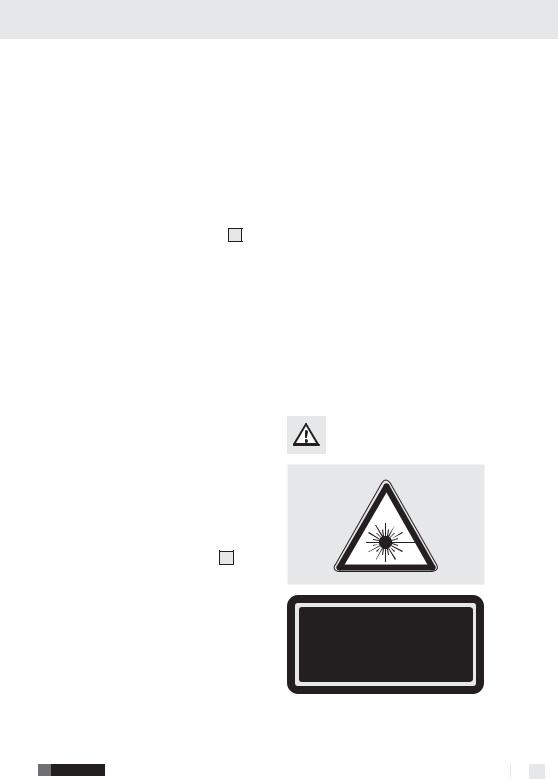
General safety advice for electrical power tools
from rotating and the force of the motor throws the device back in the direction of the operator.
c)If the sawblade distorts or becomes misaligned in the saw cut, the teeth at the rear edge of the sawblade may hook themselves into the workpiece surface causing the sawblade to move out of the saw gap and the circular saw to jump backwards in the direction of the operator.
Special safety advice for circular saws and automatic blade guards
a)Before you use the saw, always check that the automatic blade guard 7 closes properly. Do not use the saw if the bottom compartment of the blade guard does not move freely or close immediately. Never jam or tie the automatic blade guard in the open position. The bottom part of automatic blade guard may become bent if the saw falls on to the floor. Open the blade guard with the release lever and make sure that it moves freely and does not touch the saw blade or other parts at all cutting angles and depths.
b)Check that the spring on the automatic blade guard functions properly. If the automatic blade guard or spring does not function properly, have the device serviced before you use it. Damaged parts, sticky deposits or accumulations of splinters can delay the operation of the bottom blade guard.
c)Open the automatic blade guard by hand only for certain cuts such as plunge or angle cuts. Open the automatic blade guard with the release lever 7a and let it go again as soon as the saw blade penetrates the workpiece. The automatic blade guard must be allowed to operate automatically for all saw cuts.
d)Do not put the saw down on a work bench or the floor without the automatic blade guard covering the saw blade. If unprotected, a rotating saw blade moves the saw against the cutting direction and saws whatever is in its way. Always be aware that the saw blade takes some time to stop.
Special safety advice for circular saws and riving knives
a)Use the riving knife matched to the installed saw blade. The riving knife must be thicker than the body of the blade but thinner than the width of the teeth.
b)Adjust the riving knife as described in the operating instructions. If its thickness, position or alignment is incorrect, this can lead to the riving knife not e ectively preventing kickback.
c)Always use the riving knife, except for plunge cuts. After completing plunge cutting, put the riving knife back in place. The riving knife interferes with plunge cuts and can result in kickback.
d)For the riving knife to work properly, it must be within the saw gap. The riving knife is ine ective in preventing kickback for short cuts.
e)Do not operate the saw if the riving knife is bent out-of-true. Even a slight defect can cause the blade guard to close too slowly.
WARNING! Protecting yourself from laser radiation:
LASER RADIATION
DO NOT STARE INTO BEAM
CLASS 2 LASER PRODUCT
P max.: < 1 mW ·  : 650 nm
: 650 nm
EN 60825-1: 2007
Do not look directly into the laser beam or into the opening from which it is emitted.
GB/IE 11

General safety advice for electrical power tools / Preparing for use
 WARNING! Looking at the laser output aperture 12a with optical instruments (e.g. magnifying glass, magnifying lens, etc.) could result in eye damage.
WARNING! Looking at the laser output aperture 12a with optical instruments (e.g. magnifying glass, magnifying lens, etc.) could result in eye damage.
Never direct the laser beam on to reflective surfaces or at people or animals. Even a brief look into a laser beam can damage your eyes.
Changing batteries:
Open the battery compartment cover 10 using a suitable cross-head screwdriver (see Fig. G).
Remove the used batteries.
Observing the correct polarity, insert two new 1.5 V alkaline batteries type LR44 (e.g. GPA 76) and screw the battery compartment cover 10
tightly in place again.
CAUTION! The use of operating or adjustment devices or other methods of working other than those indicated in this document may lead to exposure to hazardous radiation.
Working safely:
If a dangerous situation arises, pull the mains plug immediately out of the mains socket.
Never use the device for a purpose for which it was not intended.
Always keep the device clean, dry and free of oil or grease.
If the saw is used whilst fixed in place on a saw table then the saw table must have a restart cut-out.
Make sure the device is switched on before placing it against the workpiece.
Always work away from your body.
Do not saw materials containing asbestos.
The course of the cut must have no obstructions above or below it.
The saw blade must not project more than 3 mm out of the workpiece.
When you are sawing, always make sure that you do not cut through any nails, screws or the like.
Do not work with the device in the overhead position.
Protect the saw blade from sharp blows or impacts and prevent it from becoming tilted.
12 GB/IE
When you switch o the saw, allow the blade to slow down naturally - do not assist this process in any way.
Cracked or distorted blades are not to be used. HSS (High Speed Steel) saw blades are not to be used.
Before carrying out any work on the saw, e.g. setting the base plate etc. always pull the mains plug out of the mains socket.
Never remove sawdust or splinters whilst the saw is running.
Have a suitable, tested vacuum removal device attached to the saw when working with woods or materials that create dusts that may be hazardous to health.
Always use the safety devices integrated into the circular saw, e.g. the safety lock-out 2 and automatic blade guard 7 .
Ensure that all moving parts of the saw blade protection system function properly and all the assemblies and components involved in covering the saw blade are in perfect working order.
Do not lock on the ON / OFF switch 3 in hand-guided operation.
Preparing for use
The PHKS 66 circular saw has Intelligent Power Control.
This automatic power delivery system ensures
that for a particular speed range the power output remains constant when working on harder and more resistant materials.
Switching on and o
Switching on:
Press the safety lock-out 2 to the left or right and keep it pressed.
Press the ON / OFF switch 3 . Once the saw is running you can release the safety lock-out 2 again.
The circular saw is fitted with an electronic soft start system. The
motor starts with a delay.
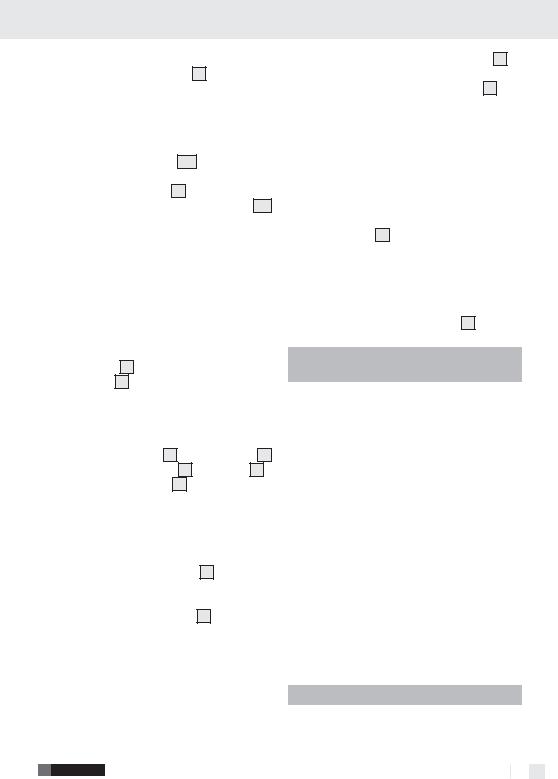
Switching off:
Release the ON / OFF switch 3 .
Setting the cutting angle
You can set the cutting angle accurately with the help of the cutting angle scale 12b .
Release the wing screws / locking bolts of the cutting angle preselector 9 on both sides, set the desired angle on the cutting angle scale 12b and retighten the wing screws / locking bolts.
Setting the cutting depth
Note: If possible we recommend that the cutting depth is set approximately 3 mm greater than the material thickness. This should help to ensure you achieve a clean cut.
Release the wing screw on the cutting depth setting clamp 5 , set the required cutting depth on the scale 19 and retighten the wing screw.
Setting the guide fence
Release the wing screw 13 of the base plate 8 and insert the guide fence 15 into the slot 14 . Retighten the wing screw 13 .
Switching the laser on and o
Switching on:
Move the laser ON / OFF switch 11 to setting “I”.
Switching off:
Move the laser ON / OFF switch 11 to setting “0”.
Note: If the batteries are exhausted replace them with two 1.5 V alkaline batteries LR44 (e.g. GPA 76).
Working with the circular saw
1.Switch on the device as described in the section about “Switching on and o ” and then place it
Preparing for use
first with the front edge of the base plate 8 against the material.
2.Align the device using the guide fence 15 or with reference to marked-out line or by using the laser.
3.Hold the machine with both hands by the handles (see Fig. A) and saw the material with moderate pressure.
Setting the speed
Turn the wheel 1 to the desired speed setting (arrow marking )
(1 = lowest speed / 6 = highest speed):
Use the general settings suggested in the following table (information o ered without liability) or adjust the speed setting on the setting wheel 1 to the material being cut.
Material |
Speed |
|
setting |
|
|
Hardand softwood (solid wood) |
6 |
cut longitudinally and transversely |
|
|
|
Plywood, hard fibre board |
6 |
|
|
Chipboard |
6 |
|
|
Blockboard, laminated wood |
6 |
|
|
Coated and veneered board |
6 |
|
|
PVC board |
3-5 |
|
|
Acrylic glass panels, Plexiglas |
2-4 |
|
|
Aluminium board |
4-6 |
|
|
Aluminium profiles |
4-6 |
|
|
Plasterboard |
1-2 |
|
|
Mineral wool board |
1-2 |
|
|
Cement-bound chipboard |
1-2 |
|
|
The circumferential speeds at minimum and maximum rotational speeds are approx.:
Setting |
Rpm |
Metres/ sec |
|
|
|
1 |
2,200 |
21.8 |
|
|
|
6 |
5,200 |
51.7 |
|
|
|
GB/IE 13

Preparing for use
Make sure that the cutting speed resulting from the e ects of di erent saw blades, materials and the force you apply to advance the saw is always less than the circumferential speed (CS) under no load.
Connecting the vacuum sawdust extraction device
Insert the adapter for vacuum sawdust removal 18 into the sawdust removal connector 17 .
Connect a vacuum device approved for the extraction of sawdust and splinters (see Fig. A).
Changing a saw blade
 WARNING! Press the spindle lock only after the mains plug has been pulled out of the socket!
WARNING! Press the spindle lock only after the mains plug has been pulled out of the socket!
1.Then remove the guide fence 15 by releasing the wing screw 13 .
2.Set the cutting depth (by means of the wing screw for cutting depth setting clamp 5 ) to the minimum position, 0 mm.
3.Swing back the retractable blade guard 7 with the help of the retracting lever 7a and put the device down.
4.Press the spindle lock button 4 (until it engages) and release the clamping screw 24 using the Allen key 6 . Now remove the clamping screw with integral washer head 24 and the clamping flange 23 (see Fig. D).
5.Detach the saw blade.
6.The installation of a sawblade is done in the reverse order.
7.Press the spindle lock button 4 (until it engages) and tighten the clamping screw 24 using the Allen key.
 WARNING! The arrow on the saw blade must agree with the arrow showing the direction of rotation (running direction shown on the device).
WARNING! The arrow on the saw blade must agree with the arrow showing the direction of rotation (running direction shown on the device).
Ensure that the saw blade is suitable for the saw spindle speed.
Installing and setting the riving knife
 WARNING! The distance between the riving knife 16 and the saw blade must not be greater than 5 mm. If the riving knife has been removed e.g. for a plunge cut, this distance must be observed again when the riving knife is reinstalled (see Fig. F).
WARNING! The distance between the riving knife 16 and the saw blade must not be greater than 5 mm. If the riving knife has been removed e.g. for a plunge cut, this distance must be observed again when the riving knife is reinstalled (see Fig. F).
Removing the riving knife (see Fig. E):
1.Release the wing screws of the cutting depth setting clamp 5 and swing the circular saw up until it meets the stop; this exposes the riving knife mounting 25 .
2.Screw out the mounting screws 26 and remove the riving knife 16 .
 WARNING! After completion of the plunge cut the riving knife 16 must be reinstalled before the circular saw is used for any other sawing tasks.
WARNING! After completion of the plunge cut the riving knife 16 must be reinstalled before the circular saw is used for any other sawing tasks.
Setting the riving knife (see Fig. F):
Set the distance between the riving knife 16 and the tips of the saw blade teeth to a maximum of
5 mm, and the distance between the tip of the riving blade and the lowest point of the saw blade to a maximum of 5 mm.
The distances to be set are illustrated in Fig. F.
Tips and tricks
Use the cutting angle scale according to the cutting angle 12b : rectangular cut = 0° mark, 45° cut = 45° mark.
Breaking out of the cut edges of delicate surfaces, e.g. coated chipboard or doors, can be avoided by applying masking tape in advance along the cutting line. This has the additional advantage that masking tape shows up the cutting line better than a smooth surface. An even more e ective way of stopping the cut edges from being broken out is to clamp a thin piece of wood along the cutting line, which is then also sawn through.
14 GB/IE

Maintenance and cleaning / Service / Warranty / Disposal
Maintenance and cleaning
WARNING! DANGER OF INJURY!
Always pull the mains plug out of the socket before doing any work on the device.
Clean the device after you have finished using it.
Use a cloth to clean the outside of the device - never use petrol, solvents or cleaners.
Service
 WARNING! Have your device repaired at the service centre or by qualified specialist personnel using original manufacturer parts only. This will ensure that your device remains safe to use.
WARNING! Have your device repaired at the service centre or by qualified specialist personnel using original manufacturer parts only. This will ensure that your device remains safe to use.
 WARNING! If the plug or lead needs to be replaced, always have the replacement carried out by the manufacturer or its service centre. This will ensure that your device remains safe to use.
WARNING! If the plug or lead needs to be replaced, always have the replacement carried out by the manufacturer or its service centre. This will ensure that your device remains safe to use.
Warranty
This appliance is guaranteed for 3 years from the date of purchase. It has been carefully produced and meti-culously checked before delivery. Please keep your receipt as proof of purchase. Contact your service centre by telephone in case of questions pertaining to the warranty. Your goods can be transmitted free of cost only in this manner. This warranty applies only to the initial purchaser and is non-transferable.
The warranty covers only material or manufacturing faults, not normal wear or damage to fragile parts such as switches or rechargeable batteries. The appliance is intended solely for private, not commercial, use.
If this product has been subjected to improper or inappropriate handling, abuse, or interventions not carried out by one of our authorised sales and service outlets, the warranty will be considered void. This warranty does not a ect your statutory rights.
GB
DES UK LTD
Tel.: 0871 5000 700 (£ 0,10 / minute) e-mail: support.uk@kompernass.com
IE
Kompernaß Service Ireland
Tel.: 1850 930 412 (0,082 €/Min.)
*Standard call rates apply. Mobile operators may vary.
e-mail: support.ie@kompernass.com
Disposal
The packaging is wholly composed of environmentally-friendly materials that can be disposed of at a local recycling centre.
Do not dispose of electrical power tools with the household rubbish!
In accordance with European Directive 2002/96/EC (covering waste electrical and electronic equipment) and its transposition into national legislation, worn out electrical power tools must be collected separately and taken for environmentally compatible recycling.
Contact your local refuse disposal authority for more details of how to dispose of your worn out electrical devices.
Do not dispose of rechargeable batteries with your household refuse!
Disposal of batteries
Batteries must be recycled in accordance with Directive 2006 / 66 / EC and must not be disposed of with household refuse. Battery users are obliged by law to take all rechargeable and single-use batteries to a collection point operated by a public authority or a retailer.
GB/IE 15

Declaration of Conformity / Manufacturer
Declaration of Conformity / Manufacturer 

We, Kompernaß GmbH, the person responsible for documents: Mr Dennis Dohm, Burgstr. 21, D-44867 Bochum, Germany, hereby declare that this product complies with the following standards, normative documents and EU directives:
Machinery Directive
2006 / 42 / EC
EU Low Voltage Directive 2006 / 95 / EC
EN60745-1 EN60745-2-5 EN60825-1
Electromagnetic Compatibility 2004 / 108 / EC
EN55014-1
EN55014-2 EN61000-3-2 EN61000-3-3 EN61000-6-1 EN61000-6-3
Type / Device description:
Circular saw PHKS 66
Date of manufacture (DOM): 12 - 2009
Bochum, 31.12.2009
Hans Kompernaß
- Managing Director -
We reserve the right to make technical modifications in the course of further development.
16 GB/IE

Sisällysluettelo
Aluksi |
|
|
Määräystenmukainen käyttö ........................................................................................ |
Sivu |
18 |
Varusteet ........................................................................................................................ |
Sivu |
18 |
Toimitus sisältää............................................................................................................. |
Sivu |
19 |
Tekniset tiedot ................................................................................................................ |
Sivu |
19 |
Sähkötyökaluja koskevat yleiset turvaohjeet |
|
|
1. Työpaikkaturvallisuus ................................................................................................ |
Sivu |
19 |
2. Sähköturvallisuus....................................................................................................... |
Sivu |
20 |
3. Henkilöiden turvallisuus............................................................................................ |
Sivu |
20 |
4. Sähkötyökalujen huolellinen käsittely ja käyttö....................................................... |
Sivu |
20 |
Laitetta koskevat turvallisuusohjeet............................................................................... |
Sivu |
21 |
Käyttöönotto |
|
|
Kytkentä ja poiskytkentä ............................................................................................... |
Sivu |
24 |
Sahauskulman säätö..................................................................................................... |
Sivu |
24 |
Sahaussyvyyden säätö ................................................................................................. |
Sivu |
24 |
Rinnakkaisohjaimen säätö ............................................................................................ |
Sivu |
24 |
Laserin kytkentä / poiskytkentä ..................................................................................... |
Sivu |
25 |
Käsipyörösähän käsittely .............................................................................................. |
Sivu |
25 |
Käyntinopeuden säätö.................................................................................................. |
Sivu |
25 |
Lastuimurin liitäntä......................................................................................................... |
Sivu |
25 |
Sahanterän vaihto ......................................................................................................... |
Sivu |
25 |
Halkaisukiila purkaminen ja säätö ............................................................................... |
Sivu |
26 |
Vinkit ja konstit............................................................................................................... |
Sivu |
26 |
Huolto ja puhdistus........................................................................................... |
Sivu |
26 |
Huolto .......................................................................................................................... |
Sivu |
26 |
Takuu ............................................................................................................................ |
Sivu |
26 |
Hävittäminen ......................................................................................................... |
Sivu |
27 |
Vaatimustenmukaisuusvakuutus / Valmistaja .......................... |
Sivu |
27 |
FI 17

Aluksi
Tässä käyttöohjeessa / laitteessa käytetään seuraavia kuvakkeita:
Lue käyttöohje!
Tarkoitettu käytettäväksi ainoastaan sisätiloissa!
|
|
|
|
|
|
|
|
|
|
|
|
|
|
|
|
|
Viallisen verkkojohdon tai pistokkeen |
|
|
|
|
|
Huomioi varoitusja turvaohjeet! |
|
|
|
|
|
|
|
|
|
|
käyttöön liittyvän sähköiskun aiheutta- |
|
|
|
|
|
|
|
|
|
|
|
|
|
|
|
|
|
|
ma hengenvaara! |
|
|
|
|
|
|
|
|
|
|
|
|
|
|
|
|
|
Pidä ja kuulonsuojainta, hengitys- / |
|
|
|
|
|
Varo sähköiskua! Hengenvaara! |
|
|
|
|
|
|
|
|
|
|
pölysuojanaamaria, suojalaseja ja |
|
|
|
|
|
|
|
|
|
|
|
|
|
|
|
|
|
|
suojakäsineitä. |
|
|
|
|
|
|
|
|
|
|
|
|
|
|
|
|
|
|
|
|
V~ |
Voltti (Vaihtojännite) |
|
|
|
|
|
|
|
|
|
|
Huomio, Laser! Älä asetu alttiiksi |
|||
|
|
|
|
|
|
|
|
|
|
|
|
lasersäteelle. |
|||||
|
|
|
|
|
|
|
|
|
|
|
|
|
|
||||
|
|
n0 |
Mittaus-tyhjäkäyntikierrosluku |
|
|
|
|
|
|
|
|
|
|
Näin käyttäydyt oikein! |
|||
|
|
|
|
|
|
|
|
|
|
|
|
|
|
|
|||
|
|
|
|
|
|
|
|
|
|
|
|
|
|
|
|||
|
|
W |
Watti (Vaikutusteho) |
|
|
|
|
|
|
|
|
|
|
Automaattinen voimansyöttö |
|||
|
|
|
|
|
|
|
|
|
|
|
|
||||||
|
|
|
|
|
|
|
|
|
|
|
|
||||||
|
|
|
|
|
Suojausluokka II |
|
|
|
|
|
|
|
|
|
|
Elektroninen pehmeä käynnistys |
|
|
|
|
|
|
|
|
|
|
|
|
|
|
|
|
|
|
|
|
|
|
|
|
Räjähdysvaara! |
|
|
|
|
|
|
|
|
|
|
Älä hävitä akkuja tavallisen |
|
|
|
|
|
|
|
|
|
|
|
|
|
|
|
|
|||
|
|
|
|
|
|
|
|
|
|
|
|
|
|
|
|||
|
|
|
|
|
|
|
|
|
|
|
|
|
|
|
|||
|
|
|
|
|
|
|
|
|
|
|
|
|
|
|
kotitalousjätteen mukana! |
||
|
|
|
|
|
|
|
|
|
|
|
|
|
|
|
|
|
|
|
|
|
|
|
|
|
|
|
|
|
|
|
|
|
|
|
|
|
|
|
|
|
Pidä lapset loitolla sähkötyökalusta! |
|
|
|
|
|
|
|
|
|
|
Hävitä pakkaus ja laite |
|
|
|
|
|
|
|
|
|
|
|
|
|
|
|
|
|||
|
|
|
|
|
|
|
|
|
|
|
|
|
|
|
ympäristöystävällisesti! |
||
|
|
|
|
|
|
|
|
|
|
|
|
|
|
|
|
|
|
|
|
|
|
|
|
|
|
|
|
|
|
|
|
||||
|
|
Käsipyörösaha PHKS 66 |
Varusteet |
||||||||||||||
|
|
|
|
|
|
|
|
|
|
|
|
Käyntinopeuden säädin |
|||||
|
|
Aluksi |
1 |
|
|
||||||||||||
|
|
2 |
|
|
Käynnistyksen esto |
||||||||||||
|
|
|
|
|
|
|
3 |
|
|
Virtakytkin KYTKIN / KATKAISIN |
|||||||
|
|
|
|
|
Tutustu ennen käyttöönottoa laitteeseen, |
|
|
|
|
|
Karalukitus |
||||||
|
|
|
|
|
4 |
|
|
||||||||||
|
|
|
|
|
|||||||||||||
|
|
|
|
|
sen käyttöohjeisiin ja sähkölaitteita kos- |
|
|
|
|
|
Sahaussyvyyden valinta |
||||||
|
|
|
|
|
5 |
|
|
||||||||||
|
|
|
|
|
keviin yleisiin turvallisuusohjeisiin. Lue |
6 |
|
|
Kuusiokoloavain |
||||||||
|
|
tämä käyttöopas huolella. Säilytä käyttöopas huo- |
|
|
|
|
|
Teränsuoja |
|||||||||
|
|
7 |
|
|
|||||||||||||
|
|
lellisesti. Saatat myöhemmin tarvita sen tietoja. Jos |
7a |
|
|
Suojakotelon takaisinvetovipu |
|||||||||||
|
|
luovut laitteesta, anna uudelle omistajalle myös |
8 |
|
|
Peruslaatta |
|||||||||||
|
|
kaikki laitteen asiakirjat. |
9 |
|
|
Sahauskulman valinta |
|||||||||||
|
|
|
|
|
|
|
10 |
|
|
Paristotilan kansi |
|||||||
|
|
Määräystenmukainen käyttö |
11 |
|
|
KYTKIN / KATKAISIN laserlisäke |
|||||||||||
|
|
12 |
|
|
Laser |
||||||||||||
|
|
|
|
|
|
|
12a |
|
Laserlähtö |
||||||||
|
|
Tukevalla alustalla täyspuun, lastulevyjen sekä ke- |
12b |
|
Sahauskulma-asteikko |
||||||||||||
|
|
vytrakenneaineksien sahaukseen. Ota huomioon, |
13 |
|
|
Rinnakkaisohjaimen siipiruuvi |
|||||||||||
|
|
että laitteeseen kiinnitetty sahanterä on tarkoitettu |
14 |
|
|
Rinnakkaisohjaimen paikka |
|||||||||||
|
|
vain puun sahaukseen. Laitteen käyttö muuhun tar- |
15 |
|
|
Rinnakkaisohjain |
|||||||||||
|
|
koitukseen tai muutoksien teko siihen katsomtaan |
16 |
|
|
Halkaisukiila |
|||||||||||
|
|
määräystenvastaiseksi ja on vaarallista. |
17 |
|
|
Lastunpoisto |
|||||||||||
|
|
Ei kaupalliseen käyttöön. |
18 |
|
|
Pölyimuriadapteri |
|||||||||||
|
18 |
|
FI |
|
|
|
|
|
|
|
|
|
|
|
|
|
|
|
|
|
|
|
|
|
|
|
|
|
|
|
|
|
|||
|
|
|
|
|
|
|
|
|
|
|
|
|
|
|
|
|
|
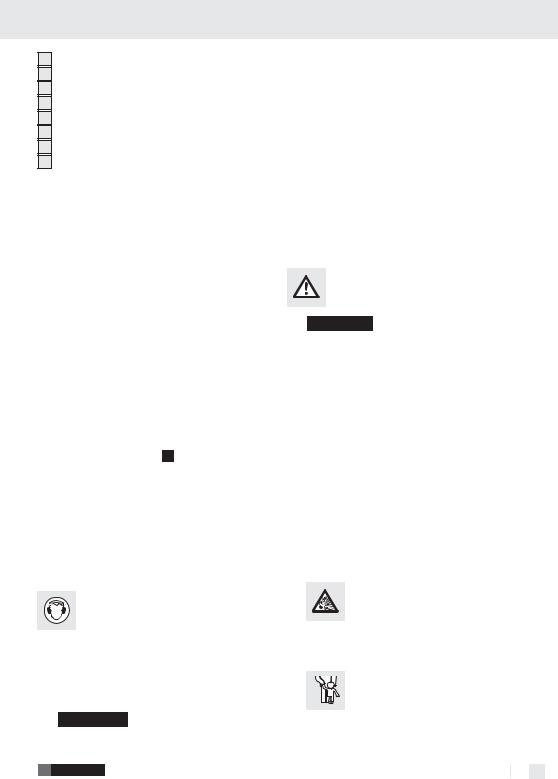
Aluksi / Sähkötyökaluja koskevat yleiset turvaohjeet
19Sahaussyvyysasteikko
20Lisäkahva
21Käyttökara
22Kiinnityslaippa
23Kiristyslaippa
24Kiristysruuvi ja aluslevy
25Halkaisukiilan kiinnitys
26Kiinnitysruuvit
Toimitus sisältää
1Käsipyörösaha
1Rinnakkaisvaste
1Pölyimurin adapteri
1Sisäkuusiokoloavain
1Käyttöohje
Tekniset tiedot
Nimellisvirranotto: |
1300 W |
Nimellisjännite: |
230 V ~, 50 Hz |
Tyhjäkäyntikierrosluku: |
n0 2200 - 5200 min-1 |
Sahanterä: |
190 x 30 x 1,8 (2,6 mm |
|
hampaiden vahvuus) |
Sahaussyvyys: |
66 mm |
Suojausluokka: |
II / |
Meluja tärinätiedot:
Melun mittausarvo laskettu EN 60745 standardin mukaisesti. Sähkötyökalun A-mitattu melutaso on tyypillisesti:
Äänenpainetaso: |
96 dB(A) |
Äänitehotaso: |
110 dB(A) |
Epävarmuus K: |
3 dB |
Käytä kuulosuojaimia!
Arvioitu kiihtyvyys, tyypillisesti:
Käteen ja käsivarteen
kohdistuva värinä ah = 3,447 m / s2 Epävarmuus K = 1,5 m / s2
 VAROLTUS! Näissä ohjeissa ilmoitettu värähtelytaso on määritetty normissa EN 60745
VAROLTUS! Näissä ohjeissa ilmoitettu värähtelytaso on määritetty normissa EN 60745
standardoidulla mittausmenetelmällä ja sitä voidaan käyttää laitevertailussa. Värähtelytaso muuttuu sähkötyökalun käytön mukaan ja se saattaa monesti ylittää tässä ohjeessa mainitun arvon. Värähtelyrasitusta saatetaan aliarvioida, jos sähkötyökalua säännöllisesti käytetään tällä tavalla.
Huomio: Liikekuormituksen arvioimiseksi tietyn työajan kestäessä on huomioitava myös ajat, jolloin laite on sammutettuna, tai ajat, jolloin laite on käynnissä, mutta ei työkäytössä. Tämä saattaa vähentää merkittävästi liikerasitusta kokonaistyöskentelyajan kestäessä.
Sähkötyökaluja koskevat yleiset turvaohjeet
 VAROLTUS! Lue kaikki turvaja muut ohjeet! Turvaja muiden ohjeiden laiminlyönti voi aiheuttaa sähköiskun, tulipalon ja / tai vakavia loukkaantumisia.
VAROLTUS! Lue kaikki turvaja muut ohjeet! Turvaja muiden ohjeiden laiminlyönti voi aiheuttaa sähköiskun, tulipalon ja / tai vakavia loukkaantumisia.
SÄILYTÄ KAIKKI TURVAJA MUUT OHJEET TULEVAA TARVETTA VARTEN! TURVALLISUUSOHJEISSA KÄYTETTY KÄSITE „SÄHKÖTYÖKALU“ KOSKEE VERKKOKÄYTTÖISIÄ SÄHKÖTYÖKONEITA (VERKKOJOHDOLLA) JA AKKUKÄYTTÖSISIÄ SÄHKÖTYÖKONEITA (ILMAN JOHTOA).
1. Työpaikkaturvallisuus
a)Pidä työskentelypaikka puhtaana ja hyvin valaistuna. Epäjärjestys ja huono valaistus voivat johtaa tapaturmiin.
b)Älä käytä laitetta räjähdysvaarallisessa ympäristössä,
jossa säilytetään helposti syttyviä nesteitä, kaasuja tai jossa kehittyy pölyä. Sähkötyökalut kehittävät kipinöintiä, joka voi sytyttää pölyn tai höyryn.
c)Lapsien ja asiattomien henki-

 löiden läsnäolo työpaikalla laitteen ollessa käynnissä ei ole sallittua. Voit helposti menettää kontrol-
löiden läsnäolo työpaikalla laitteen ollessa käynnissä ei ole sallittua. Voit helposti menettää kontrol-
lin laitteeseen.
FI 19
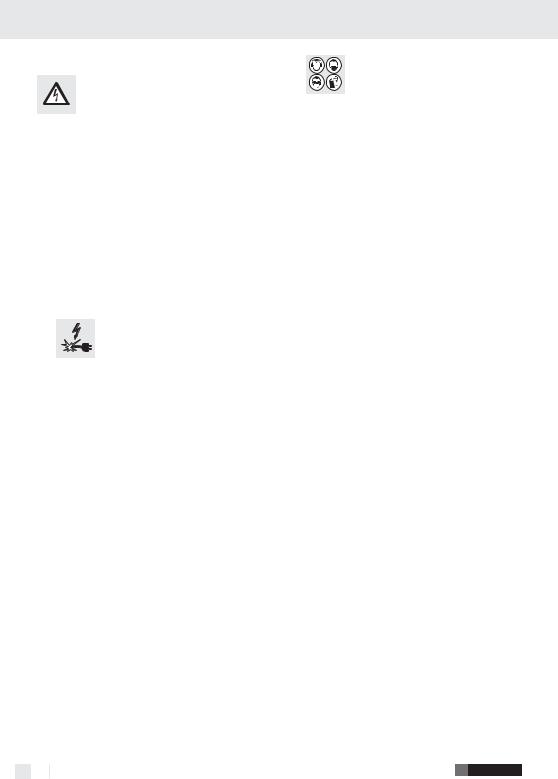
Sähkötyökaluja koskevat yleiset turvaohjeet
2. Sähköturvallisuus
Vältä sähköiskun aiheuttamaa hengenvaaraa:
a)Laitteen pistokkeen pitää sopia pistorasiaan. Pistoketta ei saa muuttaa millään tavalla. Älä käytä adapteria yhdessä suojamaadoitettujen laitteiden kanssa. Alkuperäinen pistoke ja sopivat pistorasia vähentävät sähköiskuvaaraa.
b)Vältä kosketusta maadoitettuihin pintoihin, kuten putkiin, lämpöpattereihin, liesiin sekä jääkaappeihin. Vaarana on saada sähköisku, jos kehosi on maadoitettu.
c)Älä pidä laitetta sateessa tai muussa kosteudessa. Veden pääsy laitteeseen lisää sähköisku vaaraa.
d)Älä kanna laitetta riiputtamalla sitä kaapelista ja vedä
 kaapeli irti pistorasiasta pitämällä kiinni pistokkeesta. Älä jätä kaapelia kuumaan paikkaan, älä päästä siihen öljyä, varo teräviä reunoja sekä laitteen pyöriviä osia.
kaapeli irti pistorasiasta pitämällä kiinni pistokkeesta. Älä jätä kaapelia kuumaan paikkaan, älä päästä siihen öljyä, varo teräviä reunoja sekä laitteen pyöriviä osia.
Vialliset tai kietoutuneet kaapelit lisäävät riskiä saada sähköisku.
e)Jos työskentelet ulkotiloissa, käytä silloin jatkokaapelia, jonka käyttö on sallittu myös ulkotilaan. Ulkotilaan soveltuva kaapeli vähentää riskiä saada sähköisku.
f)Jos sähkötyökalua joudutaan käyttämään kosteassa ympäristössä, on käytettävä vikavirtakytkintä. Vikavirtakytkimen käyttö pienentää sähköiskun vaaraa.
3. Henkilöiden turvallisuus
a)Ole aina tarkkaavainen, tarkista aina, mitä teet ja toimi järkevästi sähkölaitteilla työskennellessäsi. Älä käytä laitetta, jos olet väsynyt, käyttänyt huumeita, alkoholia tai lääkkeitä.
Epätarkkaavaisuus laitetta käytettäessä voi aiheuttaa vaikeita loukkaantumisia.
20 FI
b)Käytä henkilökohtaisia tur-
vavarusteita ja suojalaseja aina. Henkilökohtaisten turvavarus-
teiden käyttö, kuten pölynaamari, turvakengät, kypärä tai kuulosuoja, vähentävät loukkaantumisriskiä.
c)Varo käynnistämästä laitetta vahingossa. Varmista, että sähkötyökalu on kytketty pois päältä, ennen kuin liität sen pistorasiaan, nostat sen tai kannat sitä. Tapaturmat ovat mahdollisia, jos sormesi on laitetta kantaessasi virtakytkimellä tai laite on kytketty päälle.
d)Poista kaikki työkalut ja ruuviavaimet paikalta ennen kuin kytket laitteen.
Pyörivässä laiteosassa oleva työkalu tai avain voi johtaa tapaturmaan.
e)Vältä työskentelemästä epätavallisessa asennossa. Asetu tukevaan asentoon ja pysyttele koko ajan tasapainossa. Pystyt silloin hallitsemaan laitteen erityisesti yllättävissä tilanteissa.
f)Käytä sopivaa vaatetusta. Älä käytä löysiä vaatteita äläkä pidä koruja. Hiukset, vaatteet ja käsineet on pidettävä etäällä liikkuvista osista. Löysät vaatteet, korut ja avonaiset hiukset voivat jäädä kiinni liikkuviin osiin.
g)Jos laitteeseen asennetaan pölynimu- ri-ja lastunkeruulaite, varmistu sitä ennen, että osat on liitetty ja niitä käytetään oikein. Näiden laitteiden liittäminen vähentää pölystä aiheutuvia vaaroja.
4.Sähkötyökalujen huolellinen käsittely ja käyttö
a)Älä ylirasita laitetta. Käytä työssäsi tätä työtä varten tarkoitettua sähkötyökalua. Sopivan sähkötyökalun kanssa työskentelet paremmin ja varmemmin sen tehoalueella.
b)Älä käytä mitään sähkötyökalua, jonka käynnistyskytkin on viallinen.
Sähkötyökalu, jota ei voi enää kytkeä päälle tai päältä, on vaarallinen ja se on korjattava.
